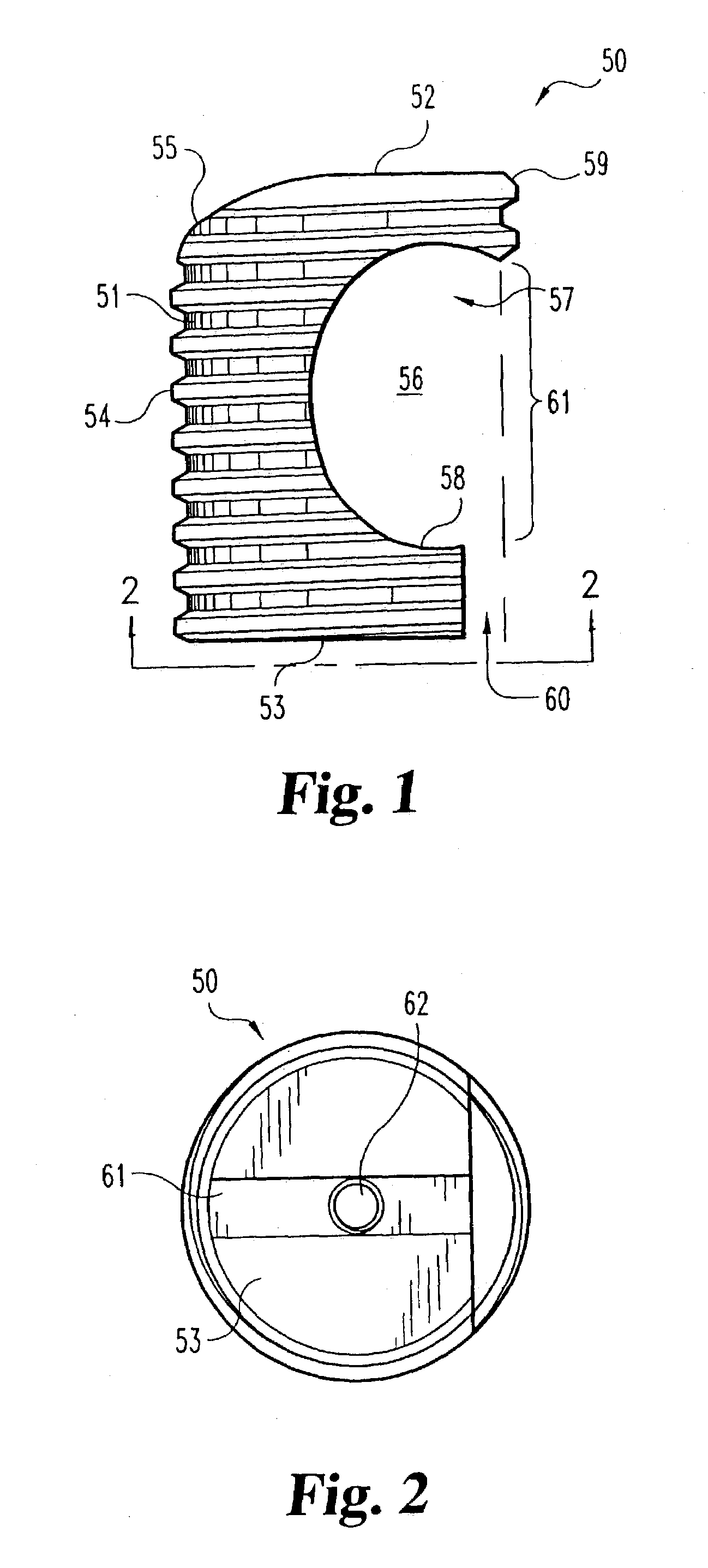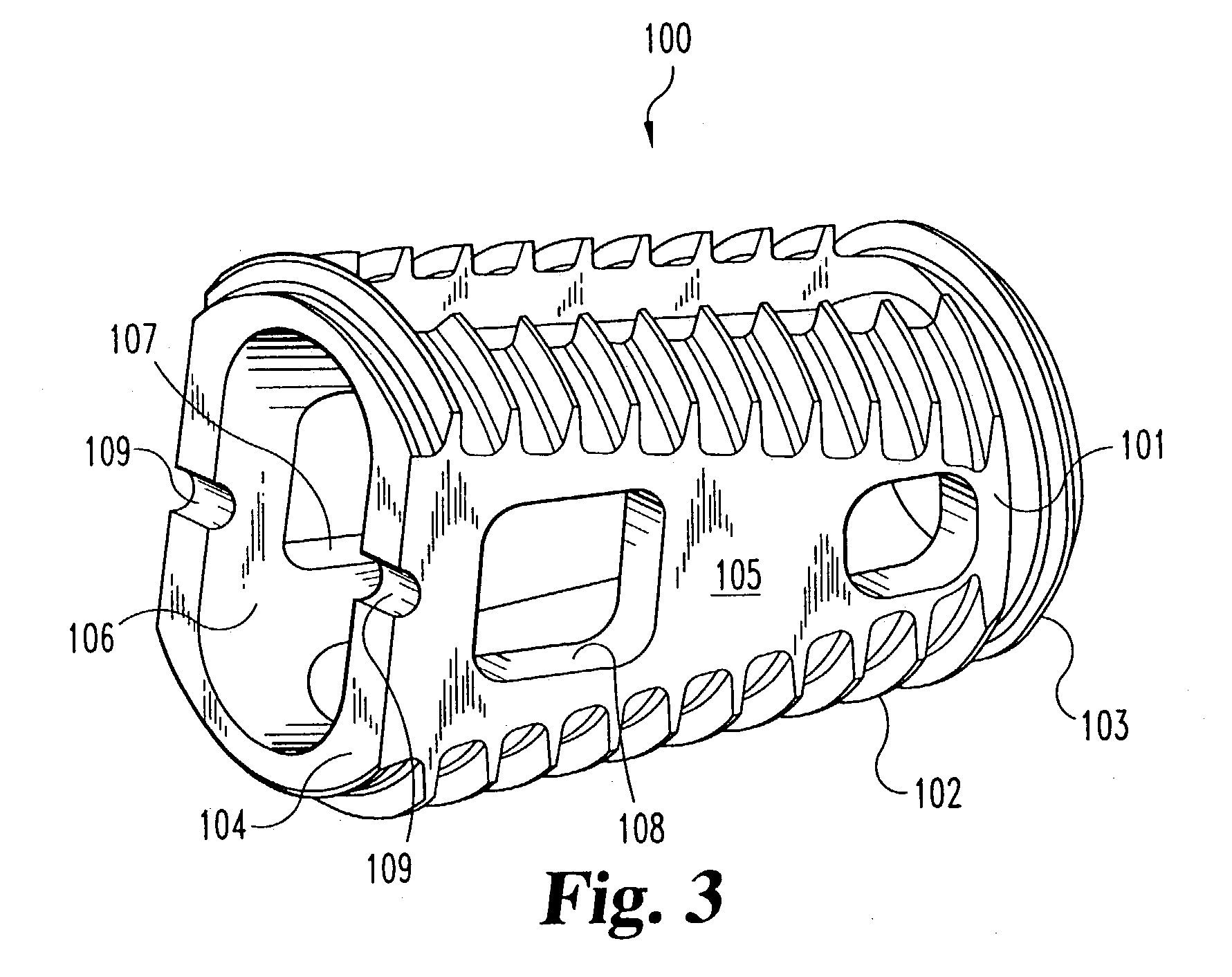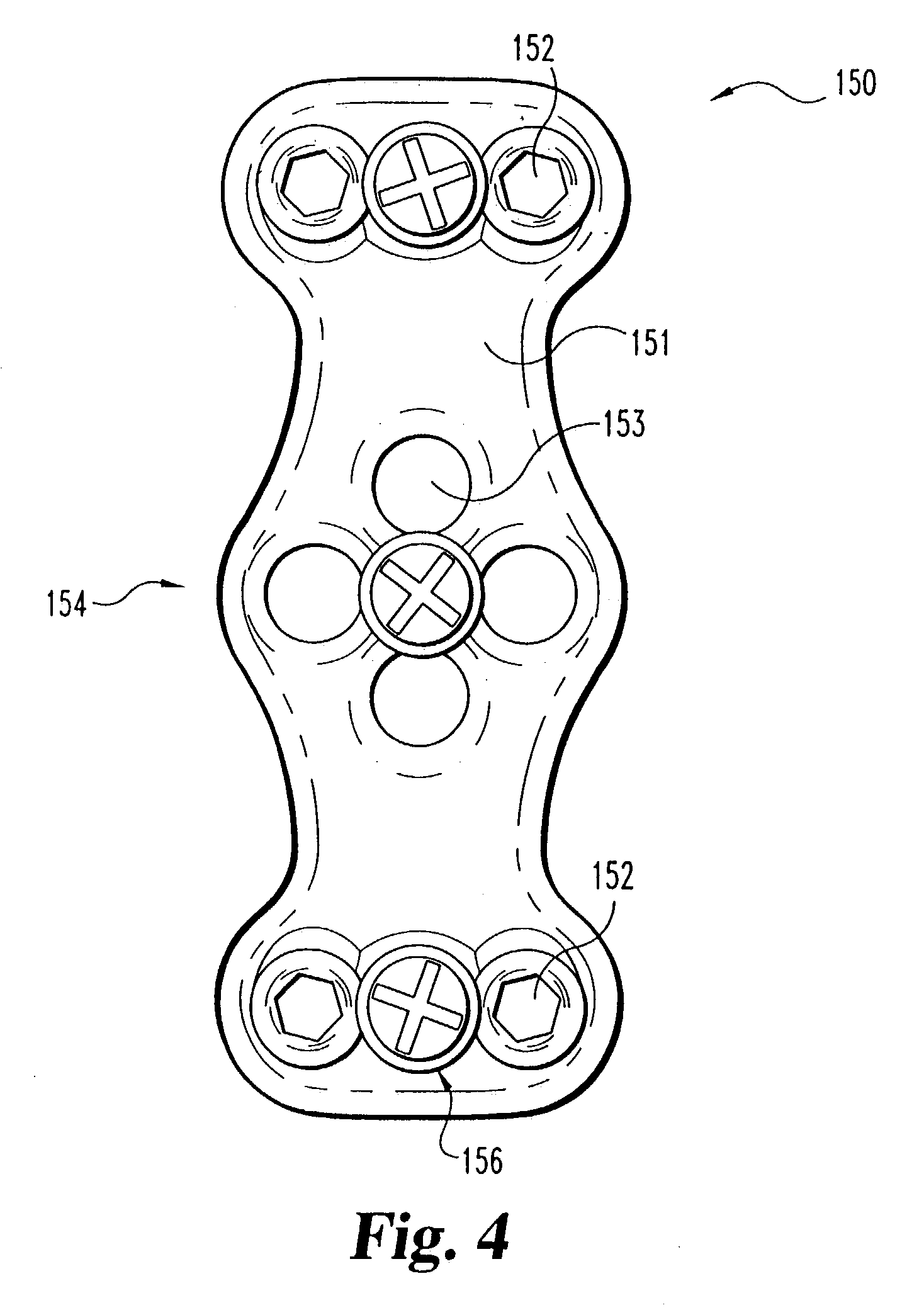Bioactive nanocomposites and methods for their use
a bioactive nanocomposite and nanotechnology, applied in the field of composite materials, can solve the problems of affecting the function of the intervertebral disc, nerve damage, etc., and achieve the effect of advantageous biological and mechanical properties
- Summary
- Abstract
- Description
- Claims
- Application Information
AI Technical Summary
Benefits of technology
Problems solved by technology
Method used
Image
Examples
example 1
Fusion Cages Formed from Polyetheretherketone / Hydroxyapatite Compositions
[0053]A polyetheretherketone (PEEK) / hydroxyapatite (HA) composition may be utilized to form an intervertebral body fusion cage. A fusion cage may be fabricated by injection molding or by machining extruded bar stock of PEEK / HA nanocomposites. The bar stock may be produced using an extrusion process during which proportional quantities of PEEK resin pellets and HA nanoparticles are simultaneously fed into an extruder. A composition of 2 grams of PEEK per gram of HA may be used. As the PEEK polymer melts at approximately 340° C., HA nanoparticles are mixed and dispersed within the polymer prior to exiting the extruder. Extruded PEEK-HA nanocomposites can also be pelletized or chopped up into small pellets for the injection molding process.
example 2
Bone Cement Composition
[0054]A nanocomposite bone cement of polymethylmethacrylate (PMMA) and HA may be prepared by mixing a PMMA polymer powder and a methylmethacrylate monomer liquid by mixing methods known to the skilled artisan. The HA nanoparticles can be dispersed within the polymer powder, the monomer liquid or both in proportional quantities, such as 1 gram of HA per 5 grams of resulting bone cement. After mixing, the bone cement becomes a flowable homogeneous paste. The bone cement viscosity increases with time before setting up into a hard solid material. The PMMA-HA nanocomposite bone cement can be applied at any time during its uncured stage depending upon its final application, which may include vertebroplasty, arthroplasty, cranioplasty, or similar procedures.
[0055]The presence of HA may help reduce the heat release during exothermic polymerization that could adversely affect the host bone. Moreover, HA also works as a media contrast for visualization of cement flow un...
example 3
Fusion Cages Formed From Poly(L-lactide-co-D,L-lactide) / Hydroxyapatite Compositions
[0056]Fusion cages may be fabricated via injection molding or machining extruded bar stock of nanocomposites of poly(L-lactide-co-D,L-lactide) (PLDLA) (volume ratio of L-lactide to D,L-lactide of 70:30) and HA. The bar stock may be produced using an extrusion process during which proportional quantities of PLDLA resin granules and HA nanoparticles are simultaneously fed into an extruder. A 2:1 weight ratio of PLDLA:HA may be used. Prior to the extrusion process, PLDLA granules coated with a proportional quantity of HA nanoparticles can be obtained via blending a suspension of PLDLA and HA in ethanol and subsequent drying. As the PLDLA polymer melts approximately above 150° C., HA nanoparticles are mixed and dispersed within the polymer prior to exiting the extruder. Extruded PLDLA-HA nanocomposites can also be pelletized or chopped up into small pellets for the injection molding process.
PUM
 Login to View More
Login to View More Abstract
Description
Claims
Application Information
 Login to View More
Login to View More - R&D
- Intellectual Property
- Life Sciences
- Materials
- Tech Scout
- Unparalleled Data Quality
- Higher Quality Content
- 60% Fewer Hallucinations
Browse by: Latest US Patents, China's latest patents, Technical Efficacy Thesaurus, Application Domain, Technology Topic, Popular Technical Reports.
© 2025 PatSnap. All rights reserved.Legal|Privacy policy|Modern Slavery Act Transparency Statement|Sitemap|About US| Contact US: help@patsnap.com



